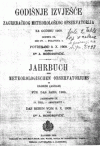
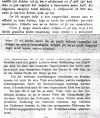
Updated: Dec 09, 2024
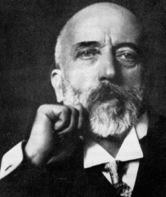
Information compiled by D. M. Finlayson (doug.finlayson@netspeed.com.au) derived from biographies written by Dragutin Skoko and Marijan Herak (see Dragutin Skoko and Marijan Herak's website at the Department of Geophysics, University of Zagreb - http://www.gfz.hr/eng/seizmologija/moho.php for original information). Photos of Mohorovicic and geological diagrams from University of Zagreb as well at http://www.istrianet.org/istria/illustri/mohorovicic/.
In the late 19th and early 20th Centuries knowledge about the major structural features of the Earth's interior was still in its infancy. The science of seismology changed all that. Now, thanks to the work of countless seismologists around the world we know quite a lot about significant features of the Earth's interior. One of the first to make a major contribution was Andrija Mohorovicic, a prominent Croatian meteorologist and seismologist.
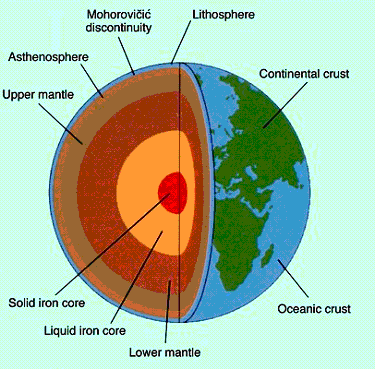
The boundary between the Earth's crust and the underlying upper mantle is now recognised by a significant increase in the velocity of seismic P-waves at depths between 15 and 50 km depth. This velocity increase indicates a major change in the composition of the rocks at that boundary. The boundary is now called the Mohorovicic Discontinuity or Moho in honour of the pioneering work of Andrija Mohorovicic.
Andrija Mohorovicic was born on 23 January 1857 in Volosko, a coastal Istrian village near Opatija, where his father, also named Andrija, was a blacksmith making anchors. The younger Andrija himself loved the sea and he married a captain's daughter, Silvija Verni, and together they had four sons.
Andrija Jr. obtained his elementary education in his home town, continued his study in the gymnasium of a neighboring town, Rijeka, and received his higher education in mathematics and physics at the Faculty of Philosophy in Prague in 1875. At the age of 15 Mohorovicic knew Italian, English and French and later he learned German, Latin and Ancient Greek.
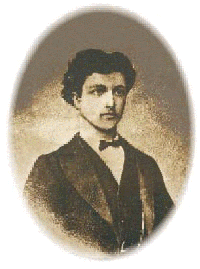
His career began with a teaching post in the Zagreb gymnasium (1879-1880) and then secondary school in Osijek. On November 1, 1882 he began to teach at the Nautical School in Bakar, near Rijeka, where he remained for nine years. Work in the Nautical School in Bakar was crucial for the beginning of Andrija Mohorovicic's scientific work. He taught meteorology and the subject absorbed him to such a degree that he founded a meteorological station in Bakar in 1887. He was meticulous in his daily work. At his own request in 1891, he was transferred to a secondary school in Zagreb. On January 1, 1892 he became the head of the Meteorological Observatory at Gric in Zagreb. He continued to work in the meteorological observatory, establishing a service to all of Croatia, all the while simultaneously teaching geophysics and astronomy at the university.
In 1893 he became corresponding member, and in 1898 a full member of what was then the Yugoslav Academy of Sciences and Arts in Zagreb. In 1901 he was appointed head of the unified meteorological service of Croatia and Slavonia, which he raised to a very high scientific observation level in personnel and equipment. And finally, he gradually extended the activities of the observatory to other fields of geophysics: seismology, geomagnetism and gravitation, switching his main interest toward seismology. He acquired a few seismographs that were installed before the occurrence on October 8, 1909 of the Pokuplje (Kupa Valley) earthquake with its epicentre 39 km southeast of Zagreb.
He advanced insight into the spreading of seismic waves from earthquakes at shallow depths through the Earth. He discovered that when an earthquake occurs two waves, longitudinal and transverse, are generated that propagate through solids with different velocities. When seismic waves strike the boundary between different types of material, they are reflected and refracted, just as light is when it strikes a glass block. The arrival times of various waves at the regional seismological observatories were registered and distributed to colleagues.
Analysing the data from seismographs at a dozen stations, Mohorovicic showed that the Earth consists of a surface layer above an internal core. From the calculations he was able to estimate the thickness of the upper layer (the Earth's crust) as 54 km. In these studies he was the first in the world to demonstrate a velocity discontinuity that separates the crustal rocks of the Earth from the deeper mantle rocks.


In the 1909 Yearbook of Zagreb Observatory, Mohorovicic makes some statements that changed the way seismologists looked at crustal structure and the crust/mantle boundary.
The passage from German and Croatian translates as follows:

"But if the steepest angle of emergence is only 100° corresponding to the deepest point of the curve (raypath) at 666 km, then the deepest point of the raypath is 49 km. In order to continue considerations (investigations), I had to decide on a depth that can at least approximately be confirmed by the observations. I decided on a rounded-down depth of 50 km. Since the P can thus advance (penetrate) only to a depth of 50 km, the boundary of the topmost layer of the Earth's crust is located at this depth. At this boundary, the material of which the Earth's (deeper) interior consists must change abruptly, because the velocity of the earthquake waves' propagation must change abruptly."
Andrija Mohorovicic, Yearbook of the Meteorological Observatory, Zagreb, 1909
Mohorovicic retired at the end of 1921, and died on December 18, 1936. He is buried at the Mirogoj Cemetery in Zagreb. In 1970 a large crater (77 km in diameter) on the far (dark) side of the moon was named in his honour.